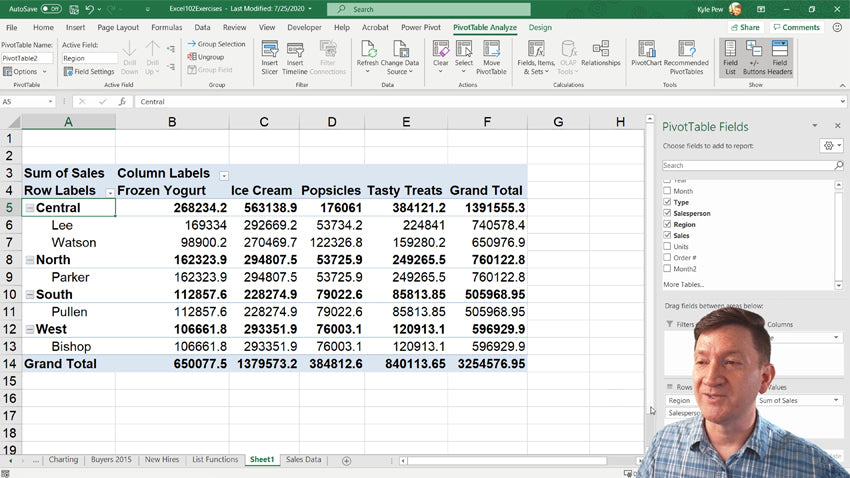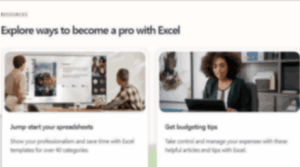Microsoft Excel is a powerful tool for data management. Mastering it can boost your productivity.
Are you looking to enhance your Excel skills from beginner to advanced level? This course offers a lifetime deal that covers all you need to know. Imagine being able to organize data, create complex formulas, and generate insightful reports with ease.
This course is designed for everyone, whether you’re just starting or looking to deepen your knowledge. With step-by-step instructions and practical examples, you’ll learn at your own pace. Excel is not just for accountants or analysts; it’s a versatile tool for anyone dealing with data. Get ready to transform your Excel skills with this comprehensive course.
Introduction To Microsoft Excel
Microsoft Excel is a powerful tool for data management and analysis. It is essential for both personal and professional tasks. This course will take you from a beginner to an advanced user. You will learn key functions and features in Excel. Let’s dive into the essentials of Microsoft Excel.
Brief History
Microsoft Excel was first released in 1985. It started as a simple spreadsheet program. Over the years, it evolved with many new features. Today, Excel is used worldwide for various tasks. It supports data analysis, budgeting, and more.
Importance In Various Industries
Excel is crucial in many industries. In finance, it helps manage budgets and forecast trends. In marketing, it tracks campaign performance and customer data. Healthcare uses Excel for patient records and inventory. Education employs Excel for grading and scheduling. It is a versatile tool in almost every field.
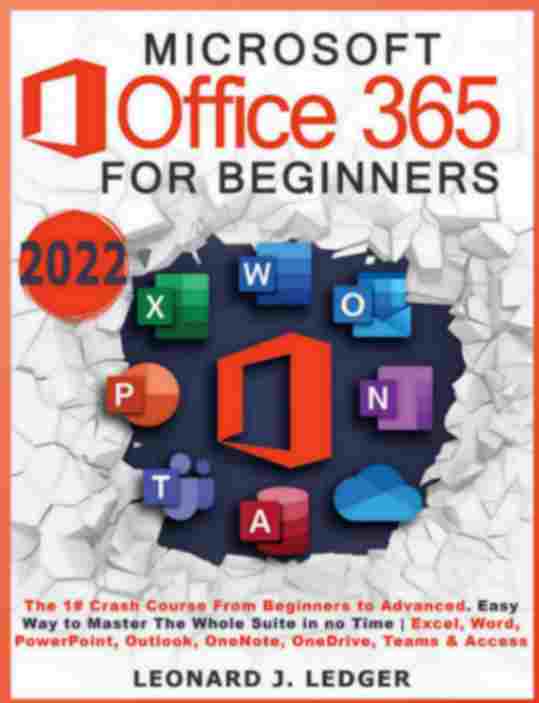
Credit: www.goodreads.com
Getting Started
Embarking on your journey to master Microsoft Excel can be exciting and rewarding. This section will help you get started with the basics. From the installation process to understanding basic navigation, you’ll be well on your way to becoming proficient in Excel.
Installation Process
Installing Microsoft Excel is straightforward. Follow these steps to get started:
- Visit the Microsoft Office website: Go to the official site.
- Select Microsoft Excel: Choose Excel from the list of products.
- Purchase or subscribe: Buy a one-time license or subscribe to Office 365.
- Download the software: Click the download link and save the file.
- Run the installer: Open the downloaded file and follow the on-screen instructions.
Once installed, you can launch Excel from your start menu or desktop icon.
Basic Navigation
Understanding the basic layout of Microsoft Excel is crucial for new users. Here’s a quick overview:
- Ribbon: This is the toolbar at the top. It contains tabs like Home, Insert, and View.
- Workbook: This is your Excel file. It can contain multiple sheets.
- Worksheet: Each sheet within a workbook. It consists of rows and columns.
- Cells: The intersection of a row and a column. Each cell has an address, like A1, B2.
To navigate Excel:
- Click on tabs: Access different features and tools.
- Select cells: Click on any cell to select it.
- Enter data: Type directly into cells and press Enter to move to the next cell.
- Use the formula bar: This is where you can enter or edit data or formulas.
Familiarizing yourself with these basic components will help you work efficiently in Excel.
Fundamental Features
Microsoft Excel is a powerful tool for data management and analysis. Learning its fundamental features is essential for anyone aiming to use Excel effectively. This section covers the basics that every beginner should know.
Workbook And Worksheet Basics
Excel organizes data in workbooks and worksheets. A workbook is a file that contains one or more worksheets. Each worksheet is a grid of rows and columns. This grid structure helps in arranging and analyzing data efficiently.
To start, open Excel and create a new workbook. You can add, rename, or delete worksheets as needed. Each worksheet has a unique name that appears on a tab at the bottom. Click on the tabs to switch between worksheets. This feature helps in managing different sets of data in one file.
Data Entry Techniques
Entering data in Excel is straightforward. Click on a cell and start typing. Press Enter to move to the cell below or Tab to move to the right. These shortcuts speed up data entry.
For repetitive data, use the AutoFill feature. Click and drag the fill handle at the cell’s corner to copy data to adjacent cells. This saves time and ensures consistency.
Excel also allows you to enter data in different formats. You can input numbers, text, dates, and formulas. Each type of data serves a unique purpose. Use the toolbar to format cells, making your data clear and easy to read.
Data Management
Efficient data management is a crucial skill in today’s data-driven world. Microsoft Excel offers powerful features to help you organize, analyze, and manage your data effectively. This course covers everything you need to know from sorting and filtering to using tables, ensuring your data management skills are top-notch.
Sorting And Filtering
Sorting and filtering are essential tools in Excel. They help you quickly find and organize data. Sorting allows you to arrange data in a specific order, such as ascending or descending. You can sort data alphabetically, numerically, or by date.
Filtering lets you display only the data that meets certain criteria. This feature is useful when working with large datasets. For example, you can filter data to show only sales from a particular region.
Here’s how you can sort and filter data in Excel:
- Select the data range you want to sort or filter.
- Click on the Data tab.
- Choose Sort or Filter from the menu.
- Customize your sort or filter options.
- Click OK to apply the changes.
Using Tables
Tables in Excel are a powerful tool for data management. They make it easier to analyze and manipulate data. Tables automatically apply formatting and filtering options to your data range.
To create a table, follow these steps:
- Select the data range you want to convert into a table.
- Go to the Insert tab.
- Click on Table.
- Ensure the checkbox My table has headers is checked if your data has headers.
- Click OK to create the table.
Once created, you can take advantage of table features such as:
- Automatic filtering and sorting.
- Easy-to-read formatting.
- Structured references for formulas.
- Quick analysis tools.
Using tables and mastering sorting and filtering will enhance your data management skills. You will be able to work more efficiently and make data-driven decisions with ease.
Formulas And Functions
Microsoft Excel offers a powerful toolset for managing and analyzing data. One of its most valuable features is Formulas and Functions. These allow users to perform calculations, manipulate data, and solve complex problems with ease.
Basic Formulas
In Excel, basic formulas are essential for everyday tasks. They help you add, subtract, multiply, and divide numbers. Here are a few examples:
- SUM: Adds up a range of cells.
=SUM(A1:A10) - AVERAGE: Calculates the average value of a range.
=AVERAGE(B1:B10) - MIN: Finds the smallest number in a range.
=MIN(C1:C10) - MAX: Finds the largest number in a range.
=MAX(D1:D10)
These formulas are easy to use and save time. They eliminate the need for manual calculations.
Advanced Functions
Advanced functions in Excel enable more complex data analysis. They include logical, lookup, and text functions. Here are a few key examples:
| Function | Description | Example |
|---|---|---|
| IF | Performs a logical test and returns values based on the outcome. | =IF(A1>10, "Yes", "No") |
| VLOOKUP | Searches for a value in a table and returns a corresponding value. | =VLOOKUP(E2, A2:B10, 2, FALSE) |
| CONCATENATE | Joins multiple text strings into one. | =CONCATENATE(F1, " ", G1) |
| TEXT | Converts a value to text in a specific format. | =TEXT(H1, "mm/dd/yyyy") |
Advanced functions are powerful tools. They can transform how you handle data in Excel.
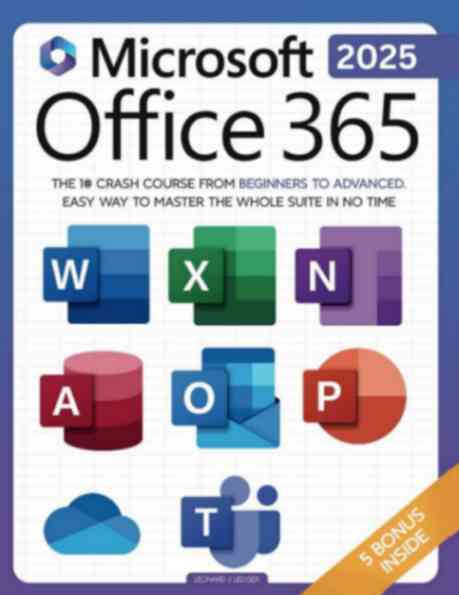
Credit: www.amazon.com
Data Visualization
Data Visualization is a key feature of Microsoft Excel that helps in representing data graphically. It allows users to easily interpret data patterns, trends, and insights. This part of the Microsoft Excel From Beginner To Advanced Course Lifetime Deal will teach you how to create effective visual representations of your data.
Creating Charts
Charts are one of the most powerful tools in Excel for data visualization. They can transform raw data into visual stories.
- Column Charts: Great for comparing values across categories.
- Pie Charts: Ideal for showing percentages and proportions.
- Line Charts: Best for displaying trends over time.
To create a chart, select your data and choose Insert from the menu. Then pick the chart type that best suits your data. Customize your chart with titles, labels, and colors to make it more informative.
Using Pivottables
PivotTables are essential for summarizing large data sets quickly. They allow you to group and filter data, making it easier to spot trends and patterns.
- Select your data range.
- Go to the Insert tab and click on PivotTable.
- Choose where you want the PivotTable to be placed.
- Drag fields into the Rows, Columns, and Values areas.
PivotTables can be customized further with PivotCharts. These charts provide a visual representation of the PivotTable data, making it even easier to understand.
| Chart Type | Use Case |
|---|---|
| Bar Chart | Comparing multiple items |
| Scatter Plot | Showing relationships between variables |
| Heat Map | Visualizing data density |
By mastering these data visualization techniques, you can make your Excel data more understandable and actionable.
Automation With Macros
Excel’s automation features can save you hours of manual work. One powerful feature is Macros. Macros are sequences of commands that automate repetitive tasks. Learn to use them and make your work easier.
Recording Macros
Recording macros is the first step to automating tasks. You do not need coding skills to start. Excel captures each step you perform and saves it. To record a macro, go to the “View” tab and select “Record Macro”. Perform the tasks you want to automate. Excel will remember your actions. Stop recording once done. Your macro is ready.
Editing Macros
Editing macros can refine your automation. Open the macro editor from the “View” tab. Select “Macros” and then “View Macros”. Choose the macro to edit and click “Edit”. The editor shows the VBA code for your macro. You can change the code to adjust the automation. Make small changes and test them. Refine until you get the desired results.
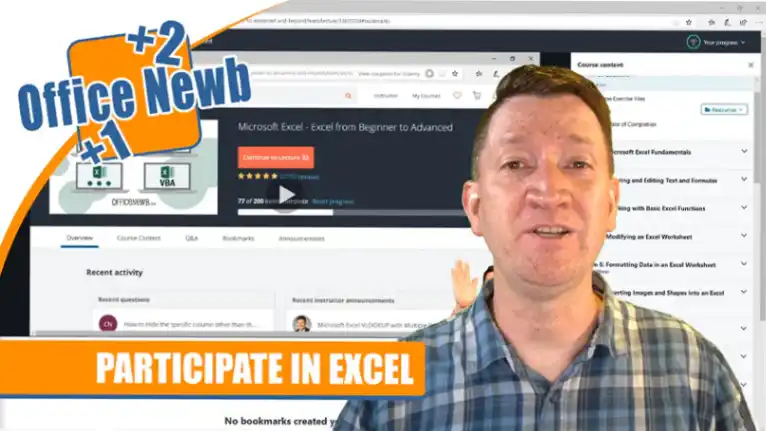
Credit: courselifetime.com
Tips And Tricks
Excel is a powerful tool that offers many features to improve productivity. Knowing some tips and tricks can take your Excel skills to the next level. Here, we will cover some useful tips under the subheadings Keyboard Shortcuts and Time-Saving Techniques.
Keyboard Shortcuts
Using keyboard shortcuts can speed up your work. Here are some essential shortcuts:
- Ctrl + C – Copy
- Ctrl + V – Paste
- Ctrl + X – Cut
- Ctrl + Z – Undo
- Ctrl + Y – Redo
- Ctrl + F – Find
- Ctrl + H – Replace
- F2 – Edit cell
- Ctrl + Arrow Keys – Move to edge of data region
- Shift + Space – Select entire row
- Ctrl + Space – Select entire column
Time-saving Techniques
These techniques can help you complete tasks quickly and efficiently:
- AutoSum: Use the AutoSum feature by pressing Alt + = to quickly sum a column or row.
- Flash Fill: Automatically fill in data patterns by pressing Ctrl + E.
- PivotTables: Create PivotTables to summarize and analyze data with a few clicks.
- Conditional Formatting: Highlight important data using colors or icons based on specific conditions.
- Data Validation: Control the type of data entered into a cell to prevent errors.
- Freeze Panes: Keep headers or rows in view by using the Freeze Panes option.
- Remove Duplicates: Clean up your data by removing duplicate entries.
- Text to Columns: Split a single column of data into multiple columns.
These tips and tricks can make working with Excel faster and easier. Experiment with these techniques to find what works best for you.
Advanced Excel Techniques

Embark on a journey through advanced Excel techniques that will elevate your spreadsheet skills. This section delves deep into specialized tools and integrations, transforming data management and analysis.
Data Analysis Tools
Excel offers powerful data analysis tools for advanced users. Use PivotTables to summarize large datasets quickly. Create insightful reports without complex formulas. Utilize the Analysis ToolPak for statistical and engineering data analysis. This add-in provides tools like ANOVA, correlation, and regression analysis. Excel’s Solver tool can optimize complex scenarios, helping with resource allocation and budgeting.
Integration With Other Software
Excel integrates seamlessly with other Microsoft Office applications. Link Excel with Word to update data in real-time. Embed dynamic charts in your presentations with PowerPoint integration. Sync Excel with Outlook for scheduling and contact management. Excel also connects with external databases like SQL Server. This allows you to pull in and analyze large datasets effortlessly. Leverage Microsoft Power BI for advanced data visualization and business intelligence. Create interactive dashboards and share insights with your team.
Frequently Asked Questions
What Is Included In The Excel Course?
The course covers basic to advanced Excel skills. It includes formulas, data analysis, pivot tables, and VBA. Lifetime access ensures you can revisit materials anytime.
Who Can Benefit From This Excel Course?
This course is ideal for beginners and advanced users. Professionals, students, and business owners can all benefit. It enhances your Excel proficiency for better productivity.
How Long Do I Have Access To The Course?
You have lifetime access to the course. This allows you to learn at your own pace. Revisit the material anytime for refreshers.
Is Prior Excel Knowledge Required?
No prior Excel knowledge is needed. The course starts from the basics. It gradually progresses to advanced topics, making it suitable for everyone.
Conclusion
This Excel course is perfect for all skill levels. Beginners learn the basics. Advanced users deepen their knowledge. Lifetime access means you can always refer back. The course offers practical lessons. You can apply them in real-world scenarios. Excel’s powerful features become more accessible.
Invest in your skills today. Improve your productivity with Excel. Start your learning journey now. Happy Excel-ing!

